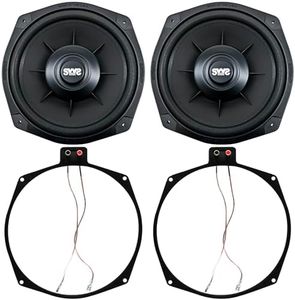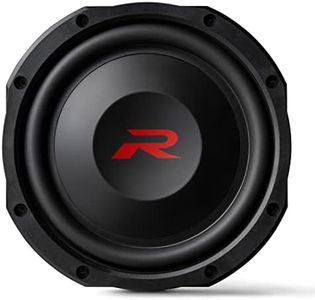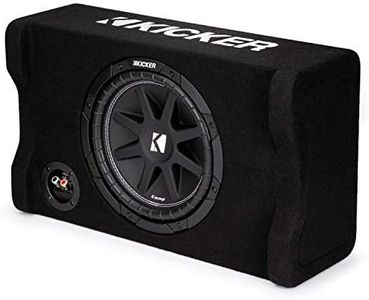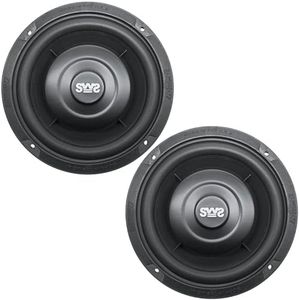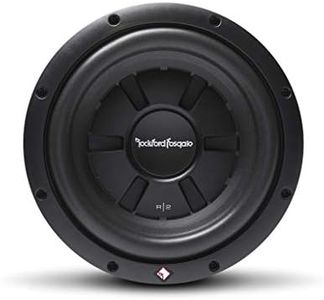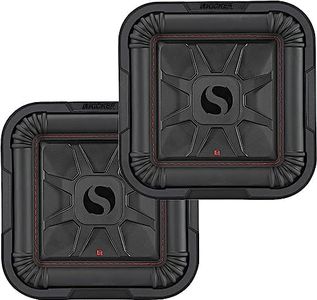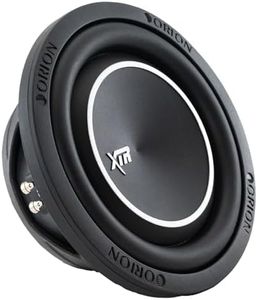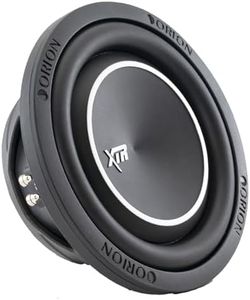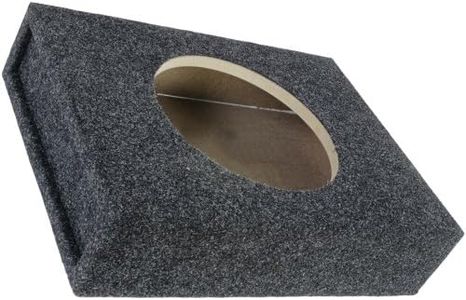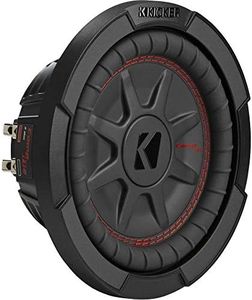We Use CookiesWe use cookies to enhance the security, performance,
functionality and for analytical and promotional activities. By continuing to browse this site you
are agreeing to our privacy policy
10 Best Shallow Mount Subwoofers
From leading brands and best sellers available on the web.By clicking on a link to a third party's website, log data is shared with that third party.
Buying Guide for the Best Shallow Mount Subwoofers
Choosing the right shallow-mount subwoofer is all about balancing the limited space you have with your desired bass performance. Shallow-mount subwoofers are specifically designed to fit into tight spots, such as under seats or in slim enclosures, making them perfect for vehicles where space is at a premium. The key to getting a subwoofer that suits you best is understanding which specifications really matter for your installation space, your bass preferences, and your existing audio system. By knowing what each specification means and how it relates to your needs, you can confidently pick a model that will provide satisfying low-end sound without any guesswork.Mounting DepthMounting depth refers to how deep the subwoofer needs to be installed in an enclosure or mounting location. It is crucial because shallow-mount subwoofers are designed for spaces where traditional subwoofers cannot fit. Mounting depths generally range from about 2 inches to 5 inches. If your available space is very limited, look for subwoofers on the shallow end of this range. Make sure to measure your intended installation spot and choose a subwoofer with a mounting depth that's equal to or less than your measurement. This ensures proper fit and safe installation.
Power Handling (RMS and Peak)Power handling shows how much power a subwoofer can handle continuously (RMS) and at short bursts (Peak). RMS is more important for everyday use, as it tells you what the sub can handle without risk of damage over long periods. Values typically range from around 100 watts RMS to 500 watts or more. If you want a deep, powerful bass and have an amplifier to match, look for higher RMS. For moderate listening or factory stereo upgrades, lower RMS will be suitable. Matching your subwoofer’s RMS with your amplifier’s output is key for efficiency and longevity.
SensitivitySensitivity measures how much sound a subwoofer produces from the power fed into it, typically represented in decibels (dB). A higher sensitivity means the subwoofer can play louder using less power. Sensitivity ratings for shallow-mount subwoofers usually range between 82dB and 90dB. If your amplifier is less powerful, choosing a higher sensitivity subwoofer will give you more volume without overworking your system. If you have a powerful amp, sensitivity is less critical since you can compensate with power.
Size (Diameter)The size of a subwoofer, usually measured in inches, affects how low and how loud it can play. Common sizes for shallow-mount subs are 8, 10, and 12 inches. Larger subs (like 12-inch) usually produce deeper and more booming bass, while smaller ones (like 8-inch) are faster, tighter, and fit into smaller areas. Choose the size that matches your available space and the type of music you enjoy—go bigger for booming bass in hip-hop or EDM, or go smaller for crisp, tight bass in rock or jazz.
Impedance (Ohms)Impedance is a measure of electrical resistance and is usually specified as 2 ohms or 4 ohms for subwoofers. Matching the subwoofer impedance to your amplifier's compatibility is crucial; a mismatch can result in reduced performance or even damage. A lower-impedance sub (2 ohms) typically draws more power and can be louder, but your amp must safely support it. Check your amplifier’s specifications and choose the subwoofer impedance that matches for safe and optimal operation.
Enclosure Type CompatibilityEnclosure type compatibility refers to the kinds of boxes or spaces a subwoofer is designed to work best in, such as sealed, ported, or free air. Shallow-mount subwoofers are often made for sealed enclosures because they require less space, but some models can also work in ported boxes for louder bass. Understand how much space you have for an enclosure and what kind of bass response you prefer: sealed boxes give tighter, more accurate bass, while ported enclosures offer louder, boomier sound. Pick a subwoofer that fits your chosen box type or is versatile enough for multiple types.
